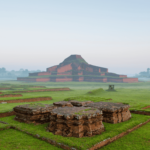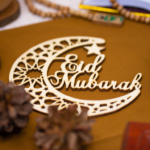Introduction:
Bangladesh’s culture is a captivating blend of ancient traditions, colorful festivals, and diverse artistic expressions. Whether it’s the pulsating rhythms of Bengali folk music or the mesmerizing artistry of muslin cloth, the cultural tapestry of Bangladesh is truly unique. This guide dives into the heart of Bangladeshi culture, uncovering the customs, art forms, cuisine, and celebrations that make it unforgettable. Explore with us and experience the essence of Bangladesh!
A Glimpse into the History of Bangladesh’s Culture
Bangladesh’s rich history is like a storybook filled with layers of culture, each page showcasing the influence of different empires and beliefs. Ancient Bengal was home to powerful dynasties like the Pala and Sena, whose art and architecture still inspire awe. These early influences left a lasting mark on religious practices, language, and even the landscape, as seen in historic temples and mosques that continue to stand today. Over time, the region embraced a tapestry of beliefs—Hinduism, Buddhism, and eventually Islam, with each shaping Bangladeshi culture in its own way.
The arrival of Islam in the 13th century added another dimension, bringing architectural marvels like the Star Mosque in Dhaka. British colonialism, which lasted until the 1947 Partition, further influenced the cultural and social landscape, especially in terms of language and governance. Today, Bangladesh thrives as a proud, independent nation with a blend of traditional and modern practices, continually evolving but always rooted in its vibrant past.
Traditional Clothing and Textile Art of Bangladesh
One of the most fascinating aspects of Bangladeshi culture is its traditional clothing, which is vibrant, unique, and meaningful. Perhaps the most famous fabric is muslin, an incredibly fine cloth that was once woven by hand in Dhaka and traded worldwide. Muslin weaving was almost a lost art, but recent revival efforts are bringing it back, letting the world rediscover this legendary fabric.
Beyond muslin, you’ll find a variety of traditional attire worn by people across Bangladesh. For women, the saree is the garment of choice, often adorned with intricate designs or woven patterns. Men, on the other hand, commonly wear lungis and kurtas, particularly in rural areas. Modern fashion in Bangladesh has begun to mix traditional and contemporary styles, allowing younger generations to celebrate their heritage in new and exciting ways.
Festivals and Celebrations in Bangladeshi Culture
Festivals are the heartbeat of Bangladeshi culture, each celebration offering a glimpse into the nation’s soul. The Bengali New Year, or Pohela Boishakh, is one of the most important festivals, marked by colorful processions, traditional music, and feasts that bring together people of all backgrounds. It’s a time of joy, renewal, and honoring the heritage of the Bengali people.
Then there’s Durga Puja, a grand Hindu festival celebrated with incredible fervor. Beautifully decorated temples, artistic idols, and joyful gatherings create an electric atmosphere during this period. For the country’s Muslim population, Eid al-Fitr and Eid al-Adha are equally significant, with prayers, festive meals, and acts of charity filling the days. Each festival brings something special, whether it’s the aroma of traditional dishes, the melody of folk music, or the sight of families and friends celebrating together.
Music, Dance, and Performing Arts in Bangladesh
The arts in Bangladesh are as varied as the colors in a Bengali saree, with music and dance deeply ingrained in the culture. Traditional Bengali folk music, like Baul songs, is often performed with instruments like the ektara and dotara. These songs, filled with soulful lyrics, explore themes of love, spirituality, and the mysteries of life, and they are particularly popular in rural areas where the Baul mystics roam.
Dance is another lively part of Bangladeshi culture. From the grace of Manipuri dance to the expressive style of Bharatanatyam, dance forms in Bangladesh are both diverse and beautiful. In urban areas, theater and performing arts have a strong presence, with Dhaka being home to a number of theater groups that produce both traditional Jatra plays and modern performances.
Bengali Cuisine: A Flavorful Exploration
Food in Bangladesh is more than just a meal—it’s a cultural experience! The cuisine is known for its bold flavors, generous use of spices, and a deep love for rice and fish. Shorshe Ilish (hilsa fish with mustard) is a classic dish that showcases the country’s culinary artistry, while Bhuna Khichuri (rice and lentil porridge) offers comfort on rainy days.
Street food is also a big part of daily life, with snacks like fuchka (a type of savory, tangy street snack) and chotpoti being crowd favorites. Desserts are equally beloved, with treats like Mishti Doi (sweet yogurt) and Roshogolla adding a sweet note to every occasion. Every dish, every spice, and every meal tells a story, capturing the essence of Bangladesh’s hospitality and warmth.
Conclusion:
Embracing the Heart of Bangladesh
In Bangladesh, culture isn’t just something preserved in history books—it’s a living, breathing part of everyday life. From traditional festivals to modern art scenes, each facet of this culture invites you to dive deep and connect with its people, traditions, and land. Whether you’re wandering through Dhaka’s bustling streets, savoring a bite of Shorshe Ilish, or witnessing the energy of a Bengali New Year celebration, you’re stepping into the vibrant, intricate world that makes Bangladesh truly unique.
Are you ready to experience this firsthand? Start planning your cultural journey through Bangladesh and immerse yourself in its unforgettable traditions, warm hospitality, and captivating history. There’s always something new to discover in the heart of Bangladesh—where the past and present dance together to create something truly remarkable!







